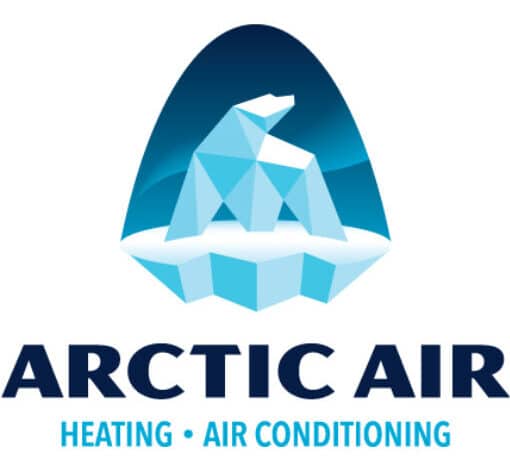Fall Furnace Tune-Up: Key to Efficient Heating
As temperatures drop and the leaves start to turn, homeowners face the important task of preparing their heating systems for the colder months. A fall furnace tune-up is essential to ensure efficient operation, prevent unexpected breakdowns, and keep energy bills manageable. This article explores the importance of scheduling a seasonal furnace inspection, highlights how regular maintenance can extend your furnace’s lifespan, and emphasizes the safety and indoor air quality benefits of a well-maintained heating system. By following these tips, you’ll help ensure your home stays warm and energy-efficient throughout winter.
Key Takeaways
- Fall furnace tune-ups help prevent mid-winter breakdowns and optimize heating efficiency.
- Routine maintenance can extend a furnace’s lifespan and enhance safety.
- Clean air filters and tuned-up burners reduce energy use and costs.
- Proper ventilation and safety checks prevent hazards like carbon monoxide leaks.
- High-efficiency filters improve both furnace efficiency and indoor air quality.
Schedule Your Fall Furnace Tune-Up for Optimal Efficiency
Why Early Scheduling Matters
As fall begins, securing a spot with a certified HVAC technician is crucial to ensure your furnace gets serviced before the winter rush. Early maintenance helps catch potential issues and prepares the system for heavy use, reducing the risk of mid-winter breakdowns. During these appointments, technicians calibrate the system, clean critical components, and check for safety issues, establishing a foundation for consistent, efficient heating.
Setting Up a Convenient Appointment
Arrange a tune-up appointment that aligns with your schedule to ensure a smooth process. This planning prevents last-minute rushes and ensures technicians have enough time for a thorough inspection. Ask about the service duration to help you plan. Scheduling early also allows technicians to spot and address any potential malfunctions, ensuring your furnace is winter-ready.
Preparing the Furnace Area
Clear any clutter or debris around the furnace area before the technician’s visit. This preparation allows the HVAC professional to easily access and inspect the system, facilitating a thorough service. A clean, well-lit area enables the technician to work efficiently and also gives homeowners a chance to spot any obvious issues to discuss during the appointment.
Prevent Breakdowns With a Fall Furnace Inspection
Detect Potential Issues Early
A fall furnace inspection helps identify issues before the winter cold sets in. Technicians check for wear and tear on components, which is crucial for avoiding costly emergency repairs during peak heating season. Regular inspections catch minor issues, such as a clogged filter or a faulty flame sensor, that could lead to larger problems if left unaddressed.
Inspecting Components for Wear and Tear
A detailed inspection of furnace components—like belts, motors, and bearings—reveals any deterioration that could affect efficiency. Identifying worn-out parts early helps prevent breakdowns and ensures the system operates smoothly all season. Technicians will also examine the heat exchanger and blower components to ensure they’re functioning optimally and safely, reducing the risk of mid-winter failures.
Thermostat and Control Testing
Accurate thermostat and control settings are essential for efficient heating. A technician will test these elements to ensure your furnace operates at the correct temperatures, reducing energy waste. Calibration adjustments made during the tune-up optimize your system’s responsiveness, helping to control heating costs and maintain a comfortable home temperature.
Save Energy Costs by Tuning Up Your Furnace This Fall
Enhancing Efficiency for Lower Bills
A well-maintained furnace operates more efficiently, translating into energy savings. A professional HVAC technician will inspect and adjust components to reduce strain on the system, minimizing energy use. Cleaning or replacing air filters, checking system controls, and adjusting mechanics are all part of a comprehensive tune-up that can lead to noticeable utility savings.
Air Filter Maintenance for Improved Airflow
Clean air filters are essential for maintaining good airflow, which keeps your furnace running efficiently. Over time, filters accumulate dirt and debris, forcing the system to work harder. Regular filter replacements ensure free airflow, reducing energy consumption and supporting better indoor air quality. This simple maintenance task can have a significant impact on furnace efficiency and energy costs.
Optimizing Burner Settings
Proper adjustment of burner settings ensures optimal furnace performance. HVAC technicians carefully calibrate the air-to-fuel ratio, which promotes even heat distribution and reduces energy waste. These adjustments make the heating system more efficient, translating to savings on energy bills. Precise burner settings also help the furnace operate smoothly and quietly, improving comfort and system longevity.
Increase Your Heating System’s Lifespan With Maintenance
Routine maintenance is critical for extending the life of a heating system, and fall is the ideal time to address essential tasks. Simple preventative measures—like lubricating moving parts, securing electrical connections, and inspecting the heat exchanger—enhance performance and durability.
Lubricating Moving Parts
Lubricating the furnace’s moving parts reduces friction, preventing wear and tear that can lead to system breakdowns. During a tune-up, technicians apply high-quality lubricants to bearings and motors, which is essential for smooth operation. Proper lubrication prevents parts from stiffening in colder temperatures, contributing to the furnace’s overall efficiency and longevity.
Securing Electrical Connections
A tune-up includes inspecting and tightening electrical connections, a crucial safety measure. Loose wires and terminals can lead to system failures or even fire hazards. By ensuring secure electrical connections, technicians reduce the risk of malfunctions, promoting reliable heating throughout the colder months.
Inspecting the Heat Exchanger
The heat exchanger plays a critical role in furnace efficiency and safety, and it requires careful inspection for signs of damage like cracks or corrosion. Technicians use specialized equipment to detect even minor imperfections that, if neglected, could lead to dangerous carbon monoxide leaks. Addressing these issues during a tune-up ensures safe and efficient operation through winter.
Ensure Safe Operation With a Fall Furnace Tune-Up
Safety is a top priority with any furnace tune-up. A thorough maintenance check includes examining the system for gas leaks, carbon monoxide risks, proper ventilation, and the functionality of safety features to ensure a hazard-free heating season.
Gas Leak and Carbon Monoxide Detection
Detecting gas leaks and potential carbon monoxide issues is crucial for safe furnace operation. Technicians use specialized tools to inspect the system, ensuring it’s free of leaks. An annual check minimizes the risk of exposure to these dangerous gases, keeping your home safe and healthy.
Verifying Proper Ventilation
Proper ventilation prevents the buildup of hazardous gases in the home. Technicians check the ventilation system for blockages or leaks, ensuring that combustion byproducts, like carbon monoxide, are expelled safely outdoors. Adequate ventilation is essential for both furnace efficiency and the health of the household.
Testing Safety Features
Fall tune-ups verify that all furnace safety features, including flame sensors, thermocouples, and limit switches, are working properly. These features automatically shut down the furnace if they detect unsafe conditions, preventing overheating or other hazards. Technicians also check carbon monoxide detectors and smoke alarms to ensure they’re functioning, providing an essential layer of protection.
Improve Indoor Air Quality With Furnace Maintenance
In addition to improving efficiency, a fall furnace tune-up helps enhance indoor air quality by removing dust and debris from components, cleaning ductwork, and installing high-efficiency filters.
Removing Dust and Debris
Cleaning furnace components removes dust and debris that can clog the system and restrict airflow, reducing both efficiency and air quality. Technicians focus on cleaning blower blades, heat exchangers, and other parts prone to dirt accumulation. This step supports seamless furnace operation and minimizes the release of pollutants into the air.
Ductwork Cleaning for Healthier Air
Over time, ductwork can accumulate dust, allergens, and other contaminants that impact air quality. During a tune-up, technicians inspect and clean the duct system, promoting improved air circulation. Cleaner ducts reduce airborne pollutants, providing a healthier environment for residents during peak furnace usage.
Installing High-Efficiency Filters
High-efficiency filters capture finer particles such as pollen, dust, and pet dander that conventional filters might miss. These filters improve indoor air quality by reducing allergens, benefiting both furnace efficiency and household health. By allowing for better airflow, high-efficiency filters help the furnace operate more efficiently and contribute to a more comfortable and healthy home.
Conclusion
A fall furnace tune-up is essential for efficient, safe, and cost-effective heating throughout the winter months. Regular maintenance helps prevent breakdowns, optimizes energy use, and improves indoor air quality. By taking a proactive approach, homeowners can ensure their heating systems are in top condition, ready to provide reliable warmth and comfort during colder weather. With the added benefits of extended system lifespan and reduced safety risks, a fall tune-up is an investment that pays off in energy savings and peace of mind.
Get Your Furnace Ready for Winter – Schedule Your Tune-Up Today!
Don’t wait until winter arrives to address your furnace’s needs. Contact Arctic Air to schedule your fall furnace tune-up and ensure your heating system is in peak condition. Serving Palmdale, Lancaster, Tehachapi, Mojave, Acton, and Quartz Hill, our skilled technicians are here to keep you comfortable all season long.
Frequently Asked Questions
How does a fall furnace tune-up enhance efficiency?
A fall furnace tune-up improves efficiency by ensuring clean airflow, checking for wear and tear, and adjusting settings for optimal fuel use and heat distribution.
Can a furnace inspection prevent winter breakdowns?
Regular furnace inspections can significantly reduce the likelihood of breakdowns during winter by identifying and fixing potential issues proactively.
What are the cost benefits of fall furnace maintenance?
Regular fall furnace maintenance reduces energy bills, extends the unit’s lifespan, and prevents expensive breakdowns, offering significant long-term savings.
Will regular tune-ups extend my furnace’s lifespan?
Regular furnace tune-ups can indeed prolong the lifespan of your system, ensuring efficient operation and preventing unexpected breakdowns through routine maintenance and early fault detection.
Does a furnace tune-up improve indoor air quality?
Yes, a furnace tune-up can significantly enhance indoor air quality by ensuring efficient system operation and filtering out pollutants and allergens.


